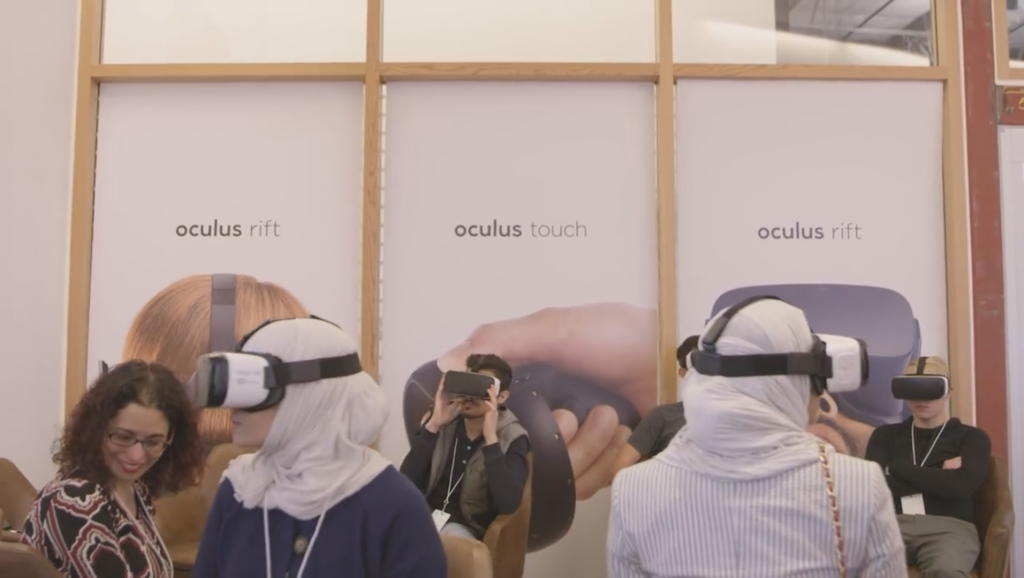Incorporating virtual reality features into social media became, more or less, a foregone conclusion the day Facebook purchased Oculus VR for $2 billion nearly two years ago. As the social platform turned 12 this week, it should come as little surprise that its founder, Mark Zuckerberg, stated that he wanted to use virtual reality technology to take 360 degree video of his infant daughter’s milestones.
“Hopefully within a year Max will be taking her first steps, and when I took my first step, my mom wrote down the date in a book,” Zuckerberg said at a small gathering of Facebook users, there to celebrate its 12th anniversary. “I want to take a 360 video of it, so that way even if my parents aren’t there, my grandparents aren’t there, they can experience it, they can actually be in the scene.”
These kinds of videos, which allow friends and acquaintances experience events almost as if they were there, could become commonplace on user feeds as the technology becomes more accessible. Facebook, which recently reported tremendous success (largely due to its video features), began support for virtual reality videos last fall, and has a page dedicated to 360-video ads to help grow support for the format.
Similarly, YouTube has markedly stepped up its support of 360 video, partly as an effort to get more viewers to start using Google Cardboard with their smartphones. However, Google might be looking to step up its game, as it is said to be in talks with camera manufacturers to further develop 360 livestreaming features. As 360 livestreaming technology becomes more accessible, marketers can use it share experiences at a whole new level.
Realizing the potential of virtual reality, Universal Music Group has partnered with iHeartMedia to produce six to ten VR-based music experiences this year so artists can better connect with fans. The VR experiences, which starts with the iHeartRadio Music Awards on April 3rd, will include marquee events like the iHeartRadio Country Festival, Summer Pool Party, Jingle Ball Tour and more. Although other artists have worked with companies like Vrse and Jaunt to experiment with virtual reality, this long-term agreement could mark the start of a trend; especially with the rumors of how Apple may be interested developing virtual reality, which it would likely use to help promote services like Apple Music.
Virtual reality doesn’t just have the potential to bring artists closer to fans — it can bring people closer together in general, but being the perfect bridge between huge distances. Users can see, interact with each other, and attend events without leaving their homes. Landmark Entertainment is looking to launch a Virtual World’s Fair in 2017, where people can come together and meet, be entertained, and shop.
AltspaceVR has a similar goal with its VR platform, which allows users to enter virtual rooms and socialize. Last November, social space partnered with Wizards of the Coast to bring Dungeons and Dragons to virtual reality, and that’s just one activity out of many that include virtual stand-up comedy and trivia night parties. The AltspaceVR also recently became available for the Samsung Gear VR, so now users have a relatively low-cost means of socializing in virtual reality instead of having to spend hundreds of dollars on a high end headset like the Oculus Rift, which also needs a powerful PC to operate it.
Whether it’s sharing a moment, attending an event, or getting together, VR could play a key role in redefining what all of that means.
